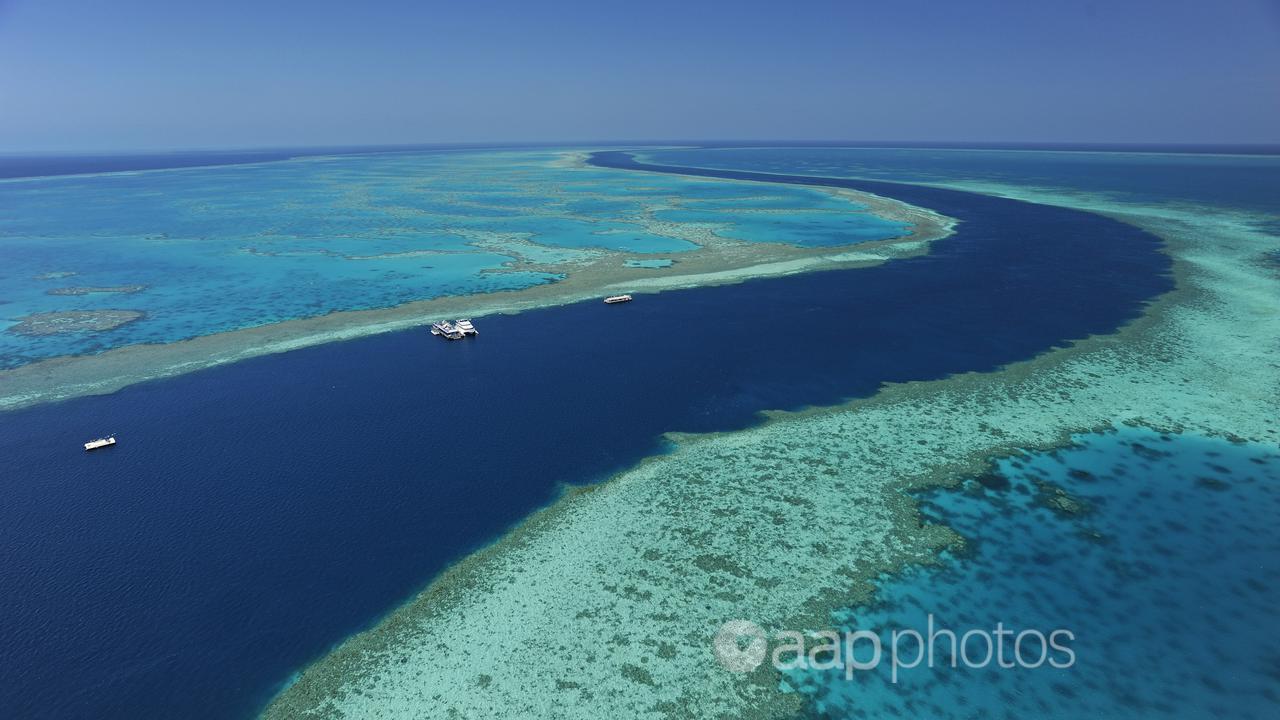It’s one of the world’s great natural wonders and an icon of Australia, yet half of the Great Barrier Reef’s coral cover has died under the coalition government, according to a Greens senator.
In a Facebook post on February 18, Senator Mehreen Faruqi said: “Under this Government, half of the Great Barrier Reef’s coral cover has died after successive mass coral bleaching events fuelled by the climate crisis.”
It’s true that coral cover declined by around 50 per cent due to bleaching in 2016 and 2017. However, there has been significant recovery in the years since, with Australian Institute of Marine Science (AIMS) data reporting more coral coverage from its most recent study (2021) than in 2013, when the coalition came to power.
AIMS figures reveal major bleaching damage across 2016/17, due to unusually warm sea surface temperatures and accumulated heat stress.
But the institute has recorded significant recovery since with 2021 coral cover levels now greater than in 2013, when the reef was recovering from previous setbacks including Cyclone Yasi in 2011.
Professor David Suggett, a marine biologist from the University of Technology in Sydney, agreed that the reef is going through a recovery period following major impacts since 2013.
“In 2020/21 we are probably getting back closer to 2013 levels,” he told AAP FactCheck in an email.
Prof Suggett added: “In a nutshell, to say 50 per cent of the reef has died under this government is not an accurate summary of the status quo.”
In an email to AAP FactCheck, a Greens spokeswoman said the senator’s claim was based on a 2020 Australian Research Council Centre of Excellence Coral Reef Studies report.
Professor Terry Hughes, co-author of the report, was quoted in a press release at the time as saying the number of small, medium and large corals had “declined by more than 50 per cent since the 1990s”.
Although the report’s scope includes several years before the coalition was in power, Prof Hughes said Dr Faruqi’s original claim was nonetheless “essentially correct”.
“Coral cover declined by 30 per cent (averaged along the entire GBR) in 2016 alone, due to mass mortality caused by the bleaching,” he told AAP FactCheck in an email. “Close to a further reduction of 20 per cent occurred due to bleaching in 2017.”
However, Prof Hughes said there had been a recovery in coral cover since due to cooler temperatures and La Niña-like conditions.
Dr Yves-Marie Bozec, a marine ecologist from the University Of Queensland, told AAP FactCheck: “I believe this statement is accurate, i.e. that at least 50 per cent of the reef’s coral cover has died over the three marine heatwaves (since 2016) – please note this is not the same thing as saying that the reef’s coral cover has declined by 50 per cent over the last decade (i.e., since 2013).”
Dr Bozec said choosing different start and end points in which to make a claim doesn’t give much insight about what has happened to the reef in the interval.
“More critical to the long-term trend of the reef’s health is the length of recovery periods between marine heatwaves, which are reducing at an alarming rate due to anthropogenic climate change,” he told AAP FactCheck in an email.
Prof Hughes added that coral cover was a terrible metric of the overall health of the reef.
“It tells you nothing of the sizes of corals, nothing about species, just how much the bottom of the ocean is covered in corals of all types and sizes,” he said.
Prof Hughes explained the corals that quickly recover are typically younger and smaller and therefore are vulnerable to future heatwave events.
“The reef is certainly more fragile now,” he added.
The 2021 AIMS report also noted the majority of recent reef recovery was driven by increases in fast-growing acropora corals, which are highly susceptible to damage from storms, bleaching or crown-of-thorns starfish.
Prof Suggett said to gauge the reef’s health it is important to understand the shifting baselines.
“The numbers have been steadily declining since the 1980s when mass bleaching was first reported and so numbers today remain historically low in line with chronic climate change pressures,” he said.
After being contacted by AAP FactCheck, Dr Faruqi’s post on Facebook was edited.
It now reads: “Scientific surveys show half of the Great Barrier Reef’s coral cover has died since 1990, exacerbated by three mass bleaching events since 2013. Climate change remains the greatest threat to the Reef.”
The Verdict
Senator Faruqi is correct to say half of the reef’s coral cover died due to mass bleaching events since the coalition came to power in 2013. However, she fails to mention the significant recovery in recent years, with AIMS data showing coral coverage was more extensive in 2021 than in 2013.
Misleading – The claim is accurate in parts but information has also been presented incorrectly, out of context or omitted.
* Editor’s note: AAP FactCheck has expanded its ability to fact-check environmental issues with the support of the Australian Conservation Foundation. AAP FactCheck retains full editorial independence in this project and continues to apply the rigorous standards required for accredited members of the International Fact-Checking Network.
All information, text and images included on the AAP Websites is for personal use only and may not be re-written, copied, re-sold or re-distributed, framed, linked, shared onto social media or otherwise used whether for compensation of any kind or not, unless you have the prior written permission of AAP. For more information, please refer to our standard terms and conditions.


















